#cad modeling services
Explore tagged Tumblr posts
Text
Furniture Design Services Deliver Custom Solutions for Modern Interiors

In today's world, interior design demands a perfect blend of aesthetics and functionality. Furniture plays a key role in defining the character of any space, whether it’s a home, office, or commercial setting. Shalin Designs, known for its expert CAD design services, is at the forefront of delivering custom furniture design services tailored to modern interior design needs. With a focus on quality, precision, and creativity, Shalin Designs helps clients create unique furniture pieces that transform spaces and bring innovative designs to life.
Custom Furniture Design Solutions for Every Space
Shalin Designs understands that no two interiors are the same. That’s why our custom furniture design services are tailored to meet the specific needs of each client. Whether you’re seeking contemporary pieces to complement a modern home or require specialized designs for commercial spaces, our team of skilled designers and CAD experts delivers solutions that fit seamlessly into your project.
From concept to creation, our approach to custom furniture is centered on client collaboration. We work closely with you to understand your design vision, ensuring that every piece we create not only meets but exceeds your expectations. Our custom furniture design services cater to a wide variety of clients, including residential homeowners, interior designers, architects, and businesses. Each project receives the same level of attention to detail, ensuring high-quality results that reflect modern interior design trends.
Elevating Design with Advanced CAD Modeling Services
One of the key factors that set Shalin Designs apart is our use of advanced CAD modeling services. This technology allows us to create precise 3D models of custom furniture designs before they are brought to life. CAD modeling services are essential in ensuring that the design process is accurate and efficient, reducing the likelihood of errors during manufacturing and assembly.
With CAD design services, our team can visualize every detail of a furniture piece, from the smallest joinery to the overall structure. This not only improves the design process but also allows clients to see a realistic representation of their custom furniture before production begins. The ability to make adjustments at the modeling stage ensures that the final product is perfectly aligned with the client’s vision and the demands of modern interior design.
Our expertise in CAD modeling services extends across various furniture types, from intricate custom pieces to larger installations. Whether you need a statement dining table, custom shelving units, or specialized office furniture, our CAD furniture design services bring your ideas to life with unmatched precision.
The Role of CAD Design in Modern Interiors
Incorporating CAD design services into modern interior design has revolutionized the way furniture is created and integrated into spaces. With Shalin Designs, clients benefit from the accuracy and efficiency that CAD technology provides. By visualizing furniture in 3D before it's built, we help avoid costly mistakes, save time, and ensure that the final product meets the exact specifications required.
Our team of skilled designers leverages CAD technology to create furniture that not only looks beautiful but also fits perfectly within the intended space. Whether you are designing for a small, compact room or a spacious open-plan office, we tailor our furniture design services to meet your exact requirements. This flexibility allows for greater creativity and ensures that each piece complements the overall aesthetic of the interior design.
In modern interior design, furniture needs to be both functional and aesthetically pleasing. Shalin Designs’ custom furniture design solutions are created with this balance in mind. We focus on producing pieces that are not only visually appealing but also practical, offering durability and longevity. With our CAD design services, we ensure that each furniture piece is constructed to the highest standards, using the best materials and techniques available.
Meeting the Demands of Custom Furniture Design
At Shalin Designs, we pride ourselves on our ability to adapt to the ever-changing needs of our clients. Our custom furniture design solutions are not limited to any particular style or material. Whether you’re looking for sleek, modern pieces or more traditional designs, we have the expertise to deliver exactly what you need.
Our approach to furniture design is highly collaborative. We work closely with clients to ensure that every aspect of the design process is aligned with their vision. From selecting materials to finalizing finishes, we ensure that every detail is taken into account. This meticulous approach allows us to create custom furniture that is truly unique and tailored to the specific needs of each project. Discover how Millwork Drafting Services can enhance your custom furniture designs.
Why Choose Shalin Designs?
Shalin Designs offers a comprehensive range of furniture design services that cater to both residential and commercial clients. Our expertise in CAD modeling services ensures that every project is executed with the highest level of precision, allowing us to deliver custom furniture design solutions that stand out in any space.
With years of experience in the industry, we understand the importance of creating furniture that not only meets aesthetic standards but also provides functionality and comfort. Our custom furniture design services are designed to meet the specific needs of modern interiors, whether it's a single piece or an entire furniture collection. By choosing Shalin Designs, you can expect:
Tailored furniture designs that complement modern interior design aesthetics
Expertise in CAD modeling services for precise and efficient production
High-quality materials and craftsmanship in every piece
Collaborative design process focused on client satisfaction
Custom solutions for both residential and commercial spaces
Learn more about the How to Choose Right Custom Millwork Drafting Company for Your Project
Enhancing Modern Interiors with Custom Furniture
Furniture plays a crucial role in shaping the overall design of any interior space. At Shalin Designs, we believe that furniture should not only be functional but also serve as an extension of your design vision. Our custom furniture design services are created with this philosophy in mind. Whether you are renovating a modern home or outfitting a new commercial space, our custom furniture solutions are designed to enhance your interiors in every way.
Whether you are looking for a single custom piece or a complete furniture solution for your home or office, Shalin Designs is here to help. Contact us today to learn more about our services and how we can help bring your vision to life.
#CAD Design Services#Furniture Design Services#Custom Furniture Design Services#Modern Interior Design Services#CAD Modeling Services#Furniture CAD Design Services#Custom Furniture Design Solutions#Shalin Designs
0 notes
Text
Architectural 3D CAD Modeling Services - COPL

Chudasama Outsourcing is one of the best outsourcing firms to offer 3D CAD modeling services. Our CAD specialists put their efforts to meet the expected quality with constant skill up-gradation. They carry research to understand the project in-depth which makes them more aware of the project requirements. Our company also customizes the CAD model as per the building requirements. We take gentle care of the preferences that the clients have. If you want to outsource CAD services, then contact us today at [email protected]
#3d cad modeling services#cad modeling services#architectural 3d cad modeling services#cad#autocad#drawing#drafting#architectural
0 notes
Text
Premium quality CAD Modeling Services | Chudasama Outsourcing
Chudasama Outsourcing offers architectural CAD Modelling Services with qualified professionals. We provide them with the necessary training so they can use AutoCAD efficiently. When modeling in AutoCAD, they have a vast range of skills and techniques at their disposal. However, the output is comparable because of the team's collaborative efforts. Each task receives their undivided attention, and they complete it without difficulty. The models are of good quality because they were created using CAD.
0 notes
Text
Best BIM Tools in 2025 and Selecting the Right BIM Software

BIM is a comprehensive approach in the AEC realm, and its applications and tools hold a significant position. It is vital to choose the right BIM software for project requirements, coordination, and efficiency. Here’s a detailed, curated list of the best BIM software and key factors for selecting it.
#bim modeling services#3d bim services#mep shop drawings#building information modeling#interior visualization#clash detection#revit families creation#3d cad drawings#shop drawing services#bim company#top bim software#best bim tools
2 notes
·
View notes
Text
MCR Interior Design (Solo Project Task) - 2010

#MCR#mcr tour#empower#promote#service#marketing#branding#presentation#3d cad modeling#3d render#design#digital art#portfolio#artist#automotive design#concept#umarali#khokhar#bristol#umi3-nous design#technology#futuristic#ideas#innovation#artwork#UK#tech skills#self taught designer
3 notes
·
View notes
Text
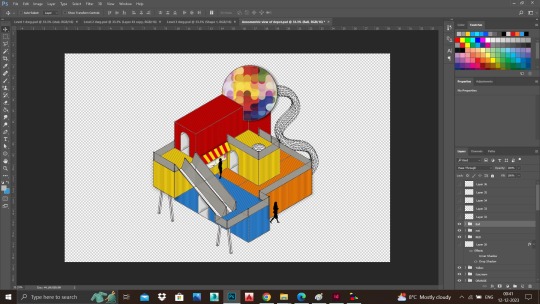
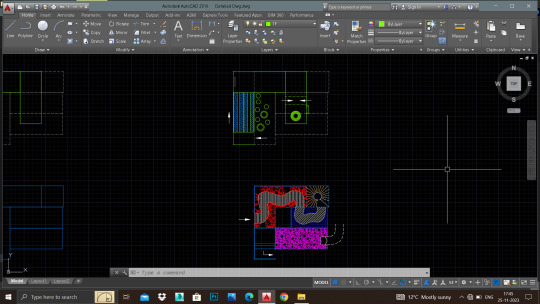
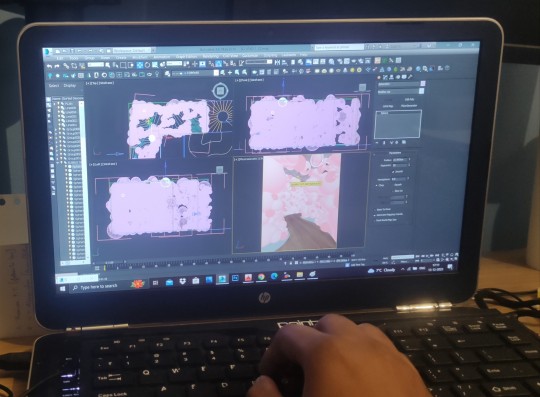
Sharing out some of my design process..... Work in Progress!
After the physical model-making part, it is time to complete the other process of design. I have used softwares like:-
AutoCAD - 2D drawing and drafting 3Dsmax with Vray- 3D Visualisation Photoshop- To give life to the design 🥰 Editing
Moving forward with the final stage of designing!
#work in progress#work#design#interior design#visualisation#drawing#architectural drafting services#cad design#cad drawing#autocad#3dsmax#3d modeling#photoshop#edit#editing#architecture#blog post#go with the flow#trust the process
5 notes
·
View notes
Text

Erasmus is one of the topmost Outsourcing architectural 3d visualization and rendering company based out of India, offering graphics rich 3D Rendering Services at affordable prices.
#bim services#civilengineering#bim technology#autocad#2d drafting services#constructioncompany#3d render#rendering#3d bim modeling services#3d cad modeling#data entry#architecture#civil construction#renovation#building#wednesday motivation
3 notes
·
View notes
Text
Here describe in my document about BIM Services, their types, and what we service doing of BIM Services So, visit and then think about your project outsourcing to us at a reasonable price. Visit More Info : https://www.siliconec.com/
#BIM Engineering Services#BIM Design#BIM Drafting#CAD Services#BIM Detailing#BIM Modeling#CADServices#SiliconEC
2 notes
·
View notes
Text
How Architectural Bim Services Streamline Building Design

Don’t you have any idea about how Architectural BIM Services USA made huge changes. Here you go. In this rapidly evolving architecture, engineering, and construction industry, there is a huge demand for promising work. Those who complete the project with precision, efficiency, and collaboration are always welcome.
#Architectural BIM Services USA#Bim Service Providers#Architectural Bim Services#Structural Bim Services#Mepf Bim Services#Infrastructure Landscape Mepf#4D Bim Software#5D Quantity Take-Off#Building Information Modelling 6D#7D Bim Asset Management Company#Point Cloud To Bim Conversion#Cad To Bim Modeling Services#Construction Documentation Checklist#Cobie Service India#Bim For Facility Management#Structural Precast Modelling#Revit Fabrication Service India#Bim Consulting Services India#Bim Implementation Service India#Bim Documentation Service#Bim Execution Planning Guide
0 notes
Text
Exploring the Benefits of CAD Jewelry Services for Custom Designs
Discover how CAD jewelry services enhance custom designs with precision, creativity, and faster turnaround times.
#Cad Jewelry Services#jewelry cad designer near me#cad designers for hire#jewelry cad and modeling#hire 3d cad designers#jewelry cad rendering services
0 notes
Text
Future Trends in 3D Modeling: What’s Next?
The world of 3D modeling is on the brink of a transformative revolution. Advancements in technology are reshaping how models are created and applied across various industries. At Shalin Designs, a leader in custom 3D modeling services, we’re embracing these trends to enhance our offerings. Let’s explore what the future holds for 3D modeling.
The Rise of AI and Machine Learning
Artificial intelligence (AI) and machine learning (ML) are becoming pivotal in 3D modeling. AI algorithms can automate tasks like retopology, and optimizing polygon count for efficient rendering. ML can suggest design improvements, identify errors, and generate basic models from user input. This allows human modelers to focus on creativity, adding intricate details and refining aesthetics.
VR and AR: Immersive Experiences
Virtual Reality (VR) and Augmented Reality (AR) are revolutionizing interactions with 3D models. VR lets designers step inside their creations, providing a life-sized perspective for better understanding of scale and spatial relationships. AR overlays digital models onto the real world, allowing visualization of furniture placement or custom millwork integration. Shalin Designs is exploring VR and AR to offer a more interactive design experience.
One of the emerging future trends in 3D modeling is the integration of AI-driven tools with VR and AR technologies. These advancements are enhancing the precision and efficiency of design processes, making it easier for designers to create highly detailed and accurate models. Shalin Designs is already exploring the potential of VR and AR to provide our clients with a more interactive design experience, leveraging these technologies to push the boundaries of what's possible in 3D modeling.
Democratization of 3D Modeling
3D modeling is becoming more accessible with cloud-based software and user-friendly interfaces. This opens doors for greater collaboration and a more diverse workforce. At Shalin Designs, we believe this democratization will spur innovation and expand design possibilities.
3D Printing: Bridging Concept and Reality
The synergy between 3D modeling and 3D printing is undeniable. As 3D printing evolves, creating complex, functional objects from 3D models will become more common, revolutionizing prototyping, manufacturing, and construction. Shalin Designs’ expertise in custom 3D modeling ensures models are optimized for 3D printing, making your ideas a reality.
Sustainability in Design
Millwork 3D modeling services contribute significantly to sustainable design. Detailed 3D models help optimize material usage, minimize production waste, and ensure precise on-site assembly. Additionally, 3D modeling can simulate performance under various conditions, identifying improvement areas to reduce environmental impact.
Conclusion Stay ahead with cutting-edge 3D modeling in your next project. Contact Shalin Designs for a consultation and let our experts bring your vision to life. We offer a range of 3D modeling services, including custom and millwork modeling. Together, we can explore future possibilities and create something remarkable.

#3d modeling#3d modeling design#3d modeling services#3D CAD Modeling#CAD Modeling Services#3D CAD Designs#Shalin Designs#3D Furniture Design
0 notes
Text

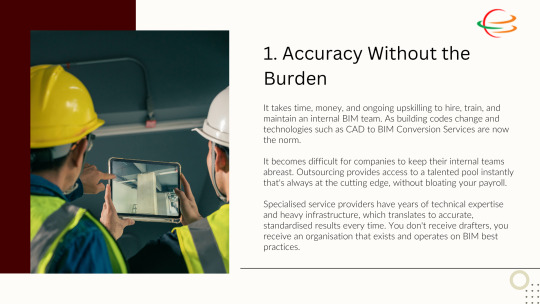
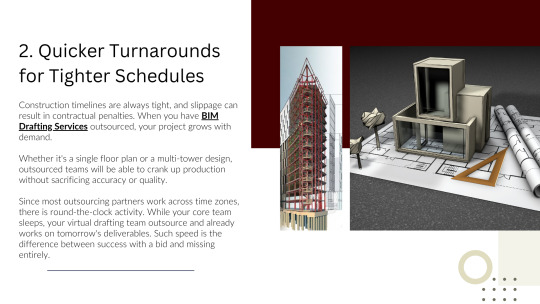
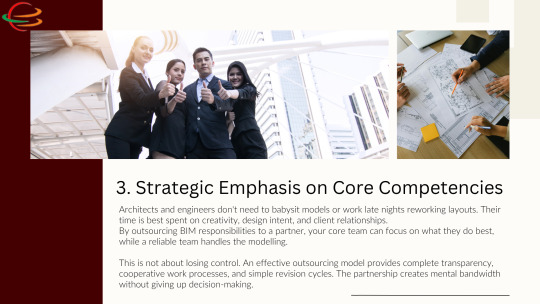
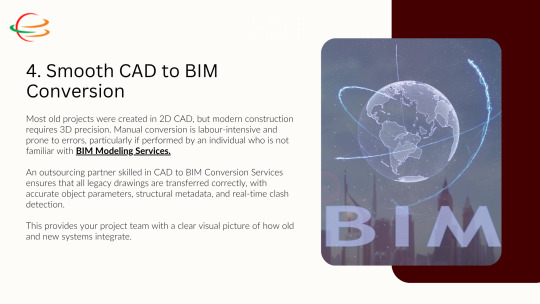
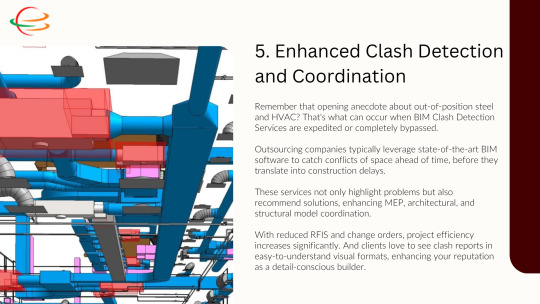
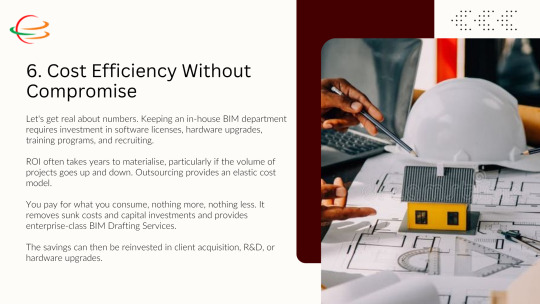


0 notes
Text
What Is Reverse Engineering and When Should You Use It?

In today’s competitive and innovation-driven manufacturing landscape, companies are continually searching for methods to optimize designs, streamline production, and gain deeper insight into existing products. One of the most powerful yet often misunderstood tools that supports these objectives is reverse engineering.
Reverse engineering enables organizations to deconstruct a product or system to understand its components, functions, and design principles. This process is not only used to replicate products but also to analyze their structure, improve upon them, or integrate them into new applications.
This article offers a comprehensive explanation of reverse engineering—what it is, how it works, the technologies involved, its applications across industries, and the scenarios where it proves most valuable.
Defining Reverse Engineering
At its core, reverse engineering is the process of disassembling or analyzing an object to understand how it was designed and manufactured. It involves extracting design information from existing products, often in the absence of technical documentation or original design files.
Unlike traditional engineering, which moves from concept to product, reverse engineering starts with the finished item and works backwards to deduce the original specifications. The insights gained are often used to:
Create 3D models and CAD files
Improve product design
Develop compatible components
Diagnose failures or weaknesses
Reproduce obsolete or legacy parts
Reverse engineering does not necessarily imply copying or duplication. Rather, it is a legitimate and valuable practice in modern product development, maintenance, and innovation.
How Reverse Engineering Works
The reverse engineering process varies depending on the object, industry, and intended outcome, but it generally follows a consistent sequence:
1. Data Acquisition
The first step involves capturing detailed information about the object’s geometry, dimensions, and features. This is typically done using advanced 3D scanning technologies such as:
Laser Scanners: Emit laser beams to detect surface contours.
Structured Light Scanners: Project light patterns and measure distortions to determine surface geometry.
Computed Tomography (CT) Scanners: Capture both internal and external features using X-ray technology.
Coordinate Measuring Machines (CMMs): Use touch probes to precisely measure specific points.
These tools collect millions of data points, forming a comprehensive digital representation of the object known as a point cloud.
2. Data Processing and Mesh Generation
The raw point cloud data is cleaned, aligned, and processed to remove noise and inconsistencies. The next step is to convert the point cloud into a polygonal mesh—a 3D surface composed of interconnected triangles.
This mesh is then optimized to ensure it accurately reflects the physical object’s shape while maintaining a manageable file size for further use.
3. 3D Modeling and CAD Conversion
Once a high-quality mesh is obtained, it is used to reconstruct the object in a computer-aided design (CAD) environment. Engineers develop a fully parametric or feature-based CAD model that replicates the part’s geometry.
At this stage, material specifications, tolerances, and functional features may also be analyzed and documented. The final CAD model can be edited, shared, or integrated into larger assemblies.
4. Analysis and Application
The finished model is then used for various purposes, including design improvements, simulation, tooling development, or manufacturing reproduction. Engineers may also perform stress tests, fit checks, and other simulations using the digital model.
Key Technologies in Reverse Engineering
Advances in digital manufacturing and metrology have significantly expanded the capabilities of reverse engineering. The following technologies are essential:
3D Scanning
High-resolution 3D scanning tools rapidly capture the surface geometry of physical objects, forming the foundation for all subsequent steps. These scanners vary in accuracy, speed, and suitability depending on the object's size, complexity, and material.
CAD Software
CAD platforms such as SolidWorks, Autodesk Inventor, Siemens NX, and others play a crucial role in interpreting scanned data and creating usable design files. These models are often parametric, allowing engineers to modify features and dimensions easily.
Simulation Tools
Finite Element Analysis (FEA) and other simulation tools are used in conjunction with CAD models to evaluate a product’s performance under various conditions. These insights support design optimization and failure analysis.
3D Printing and Prototyping
Rapid prototyping allows teams to test modifications derived from reverse engineering efforts. By printing physical models, engineers can assess fit, function, and ergonomics quickly and affordably.
When Should You Use Reverse Engineering?
Reverse engineering is applicable in a wide range of situations across multiple industries. It is especially useful when dealing with legacy components, product innovation, or systems integration. Below are the most common scenarios that justify the use of reverse engineering.
1. Recreating Obsolete or Legacy Parts
One of the primary uses of reverse engineering is to reproduce discontinued components for machines, vehicles, or systems that are no longer supported by the original manufacturer. With no access to original drawings or tooling, reverse engineering provides a reliable way to maintain critical assets and extend their lifecycle.
This is particularly valuable in aerospace, defense, rail, and heavy industries, where replacing entire systems is impractical or cost-prohibitive.
2. Product Improvement and Optimization
Reverse engineering enables manufacturers to analyze existing products and identify opportunities for improvement. Engineers can assess design weaknesses, material inefficiencies, or manufacturing complexities and apply innovative solutions to enhance performance, durability, or cost-effectiveness.
The process often leads to
Lighter and stronger designs
Reduced manufacturing steps
Better ergonomics or aesthetics
Improved energy efficiency
3. Competitive Analysis
Organisations often use reverse engineering to examine competitor products and gain insights into their features, performance, and manufacturing techniques. This helps in benchmarking, identifying intellectual property challenges, and driving innovation.
While care must be taken to respect legal and ethical boundaries, competitive reverse engineering is a legitimate practice used for market intelligence and strategic planning.
4. Integrating New Components with Existing Systems
In cases where new parts or systems need to work seamlessly with older components, reverse engineering ensures dimensional compatibility and functionality. By modeling the existing hardware accurately, engineers can design new components that align perfectly without trial and error.
This use is common in:
Automotive retrofits
Industrial equipment upgrades
Electronic system integration
5. Quality Control and Inspection
Reverse engineering is sometimes used as a validation tool in quality assurance. By scanning and modeling a manufactured part, teams can compare it to the original design and detect any deviations or defects.
This process enhances dimensional verification, especially for complex geometries that are difficult to measure with traditional tools.
6. Digital Archiving
Preserving the design data of critical components through reverse engineering creates a digital archive for future reference. This is important in museums, aerospace restoration, and asset management, ensuring that data is never lost even if physical components degrade or disappear.
Industries Benefiting from Reverse Engineering
The versatility of reverse engineering means it is widely applicable across a variety of sectors:
Aerospace
Airplane components, many of which have long service lifecycles, often require replacement or refurbishment after the original manufacturing data is lost. Reverse engineering ensures structural integrity and regulatory compliance.
Automotive
Classic cars, custom vehicles, and prototype parts benefit greatly from reverse engineering. It enables part reproduction, modification, and even digital recreation of entire vehicle systems.
Medical Devices
Medical implants, prosthetics, and surgical instruments are reverse-engineered to improve functionality, ensure anatomical fit, or replicate discontinued designs.
Consumer Electronics
Electronics companies often disassemble products to understand PCB layouts, circuitry, and design logic. This enables repair, customization, or the development of compatible accessories.
Industrial Manufacturing
Reverse engineering supports tooling design, process improvement, and machine maintenance. It is also used to digitize old parts or machinery for integration into modern workflows.
The Role of Reverse Engineering in Innovation
Beyond its practical applications, reverse engineering fosters innovation by bridging the gap between legacy knowledge and modern capabilities. It encourages experimentation, cross-functional learning, and iterative improvement.
By understanding the details of how a product works, engineers can:
Identify underutilized features
Explore alternative materials
Develop more efficient manufacturing methods
Combine legacy and modern technologies
This approach is particularly important for companies striving to remain competitive in rapidly evolving markets. It allows them to leapfrog development stages, reduce R&D costs, and bring products to market faster.
Ethical and Legal Considerations
While reverse engineering is a powerful tool, it must be practiced within ethical and legal boundaries. It is important to respect patents, copyrights, trade secrets, and intellectual property (IP) rights.
Organizations using reverse engineering must ensure their efforts do not infringe on protected designs. In many jurisdictions, reverse engineering for interoperability or repair purposes is legal, but copying patented elements without permission is not.
Working with professional providers of reverse engineering services in Australia ensures that all procedures are carried out in compliance with local laws and international IP standards.
Choosing the Right Reverse Engineering Partner
The effectiveness of reverse engineering relies heavily on the skill, experience, and tools used. Partnering with specialists who understand materials science, digital modeling, and manufacturing processes ensures accurate, high-quality results.
Providers offering reverse engineering services in Australia are equipped with advanced scanning systems, robust CAD platforms, and cross-industry expertise. They help clients navigate complex engineering challenges, from legacy part digitization to modern product development, while maintaining confidentiality and regulatory compliance.
Conclusion
Reverse engineering is a powerful, multi-purpose process that enables organizations to derive valuable design and manufacturing data from existing physical products. Whether used for reproduction, enhancement, integration, or analysis, it offers significant advantages across the product lifecycle.
By turning physical objects into digital intelligence, reverse engineering allows industries to move forward while learning from the past. It supports innovation, sustainability, and precision in a world where adaptability and speed are crucial to success.
As industries increasingly adopt digital technologies and advanced manufacturing techniques, reverse engineering will play an even more integral role—especially when executed by trusted professionals who offer comprehensive reverse engineering services in Australia and beyond.
#reverse engineering#product development#3D scanning#CAD modeling#engineering services#component analysis#design replication
1 note
·
View note
Text
Understanding the Pivotal Difference Between BIM vs. CAD

This is the core BIM and CAD comparison, making 3D BIM modeling technology powerful. In fact, the use of CAD continues for detailed, technical, and mechanical drawings as blueprints. This shift from AutoCAD to BIM services has quickly gained attention due to the plethora of perks and exponential capabilities of building information modeling. As significant as the technologies are, it is advised to outsource BIM services to renowned BIM experts. UniquesCADD is an award-winning outsourcing BIM company with extensive years of experience and a talented team.
#cad drafting services#bim architectural services#3d bim services#cad service provider#bim modeling services#autocad to bim services#mechanical cad drafting#3d bim modeling#3d modeling services#outsourcing bim company
2 notes
·
View notes
Text
Expert CAD Design Services in Sydney
Get professional CAD design services in Sydney for architectural, engineering, and product design projects. Our skilled team delivers precise, high-quality drawings tailored to your needs. Ideal for builders, developers, and designers seeking efficient and accurate CAD solutions. Contact us today for top-tier CAD design in Sydney.
1 note
·
View note
Text
Mechanical Assembly
Mechanical Assembly: Precision in Every Connection
At 3D CAD Global, we specialize in Mechanical Assembly solutions that bring together meticulously designed components with unmatched precision and performance. Whether it's a simple subassembly or a complex mechanical system, our expertise ensures every part fits, functions, and lasts as intended.
🔩 Our Capabilities Include:
High-precision component alignment
Fastening and joining solutions (bolts, rivets, adhesives, etc.)
Integration of mechanical systems with electrical or pneumatic elements
Prototype and production-scale assemblies
Quality-controlled testing and verification
We focus on accuracy, reliability, and repeatability, enabling clients to reduce downtime and improve operational efficiency across industries like electronics, automotive, aerospace, and industrial equipment.
🚀 Why Choose Us?
Tailored solutions for complex applications
Seamless integration with upstream and downstream processes
Adherence to strict dimensional tolerances
Skilled assembly technicians and precision tools
Fast turnaround with consistent quality
From concept to completion, we ensure your mechanical assemblies are built to perform — because at 3D CAD Global, every connection counts.
0 notes